Over the past 3 years, we’ve worked hard to create our dream home & homestead in Idaho! Today, I’m sharing all the before & after photos!
Now that we are officially moving and leaving our Idaho homestead (all the deets here!), it’s time to take a quick moment to celebrate all the work we’ve done here. And what better way to do that than with a before & after photo tour?!
When we bought our homestead, it was overgrown, smelly, dirty and in very rough shape. I still gag just remembering how putrid everything smelled! Honestly, the “Before” pictures in this post don’t do justice to the level of “eww” that this place was. They certainly don’t capture all the little issues we experienced – like the wasps and bees that had taken up residence in the kitchen wall!
I think a lot of people thought we’d gone crazy when we bought this place. Heck, there were times that I thought we’d gone crazy! And living in what felt like a constant a construction zone for the first two years really didn’t help! But, buying a fixer-upper is an experience unlike any other! I’ve never been as proud of anything as I am of this place. Honestly, we’ve loved every moment of it. And now that we are leaving, it actually feels strange to be officially “finished” with all the projects!
I’m so excited to finally share pictures of all the projects we’ve been working on over the last three and half years! I think that the pictures show the very dramatic difference that a lot of love and sweat equity can make! Honestly, if we can do it, so can you! And here’s why:
- We did about 90% of the projects ourselves. We hired out some electrical work and the plumbing work when we had the water and sewer lines replaced. We also had a handyman do the bathroom remodel for us.
- We didn’t do any massive renovations to the home. We didn’t blow out any walls or change the footprint of the house at all. Honestly, the upgrades we did were all things that everyday people (just like us!) can do!
- We saved our pennies and paid cash for all of the upgrades and renovations . This allowed us to build equity in our home without increasing our mortgage or debt amount.
- We used salvaged and repurposed materials whenever possible to save money and be good stewards of our resources (learn more about how we salvage materials here). Obviously, this is a little easier outside because there are so many salvageable materials that can be used for landscaping. For instance: our perennial garden area was made using only free materials, the pathway in the chicken yard was made from free stone that was being thrown away, and even our wood storage area and goat feeding barn were framed with repurposed lumber. Indoors, things like tile were purchased secondhand from stores like ReStore, which also saved us a lot of money.
For all of you just starting the fixer-up process: I guarantee it won’t be easy, but it will be worth it!
The Homestead: Before & After
Garden Areas:
- Created entertainment center in the middle of the garden with weed mat, bark and stock tank pool
- Renovated and re-filled raised garden beds (full details here)
- Created perennial garden area with herbs, fruit trees, grapes and small wildlife pond
- Installed watering system in perennial garden
- Installed pathways, seating area and pergola in perennial garden
- Rebuilt and insulated rabbit hutches
Perennial Garden Area: Fall 2016 vs. Summer 2019

Vegetable Garden Area: Summer 2016 vs. Summer 2019
Vegetable Garden Area: Summer 2016 vs. Summer 2019
Barns & Pasture Areas:
- Built hay barn and adjacent wood storage area
- Fenced pasture, installed gates, adjusted pen layout and created kidding pen (more here!)
- Resided barns
- Built “feeding station” addition onto the small goat barn
- New siding on milk parlor and added insulated kidding pen area
- Created back driveway area to access barns and pasture
Hay Barn: Summer 2016 vs. Winter 2020
Milk Parlor: Fall 2016 vs. Winter 2020
Goat Barn: Summer 2016 vs. Summer 2019
Yard Areas:
- Cleaned & painted chicken coops
- Renovated flower bed areas (more about that here!)
- Installed stone paths from recycled materials (details here!)
- Painted shed
- Created outdoor living area with deck and pergola
Chicken Yard: Summer 2016 vs. Summer 2019
Chicken Coop: Summer 2016 vs. Summer 2019
Storage Shed & Outdoor Living Area: Summer 2016 vs. Summer 2019
The Home: Before & After
Home Exterior:
- Removed & replaced front deck
- Removed broken screen doors & painted wood doors
- Upgraded door handles and locks
- Built shutters
- Renovated flower beds
House: Summer 2016 vs. Winter 2020
Living Room:
- Installed laminate flooring
- Painted walls, ceilings and trim
Kitchen:
- Had all plumbing and water lines replaced and updated
- Removed laminate countertops and replaced with quartz
- Painted cabinets, replaced hardware (knobs) added bead-board to the front of the uppers & crown molding.
- Adjusted the height of the upper cabinets
- Removed upper cabinets above stove & replaced with handmade wood shelves
- Added handmade wood shelves in dining area
- Replaced exhaust hood over stove
- Stained & refinished wood ceiling
- Replaced dining light and ceiling fan
- Added under-cabinet lights and accent lights above sink
- Installed garbage disposal
- Installed farmhouse sink and new faucet hardware
- Removed and replaced tile backsplash
- All new appliances
- Painted walls
Bathroom:
- New Paint
- Removed vinyl floor and replaced with tile
- Replaced vanity, light, exhaust fan, sink fixtures & tub fixtures.
- Had all the plumbing (water & sewer) lines replaced and updated
- Removed & replaced shower tile
- Installed new tile backsplash above sink
- More details on the bathroom renovation here
Mudroom:
- Replaced shelves
- New paint
- Had water lines replaced
- Safety repairs made to water heater
Bedrooms:
- Removed carpet & installed laminate flooring
- Replaced baseboards
- Paint
- Installed storage unit in master closet
Do you have a fixer-up home and homestead too? Tell us about it in the comments!
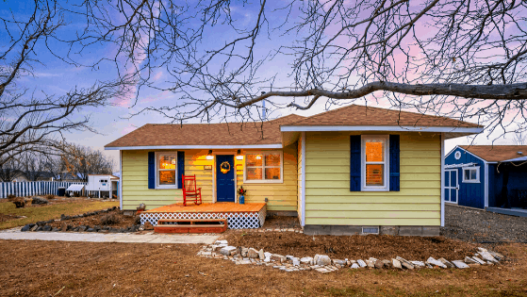
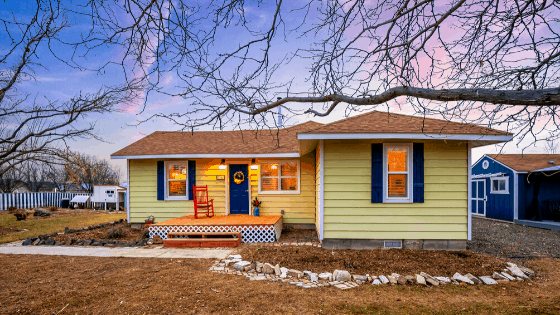















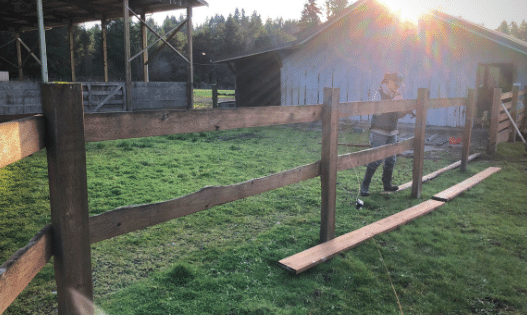
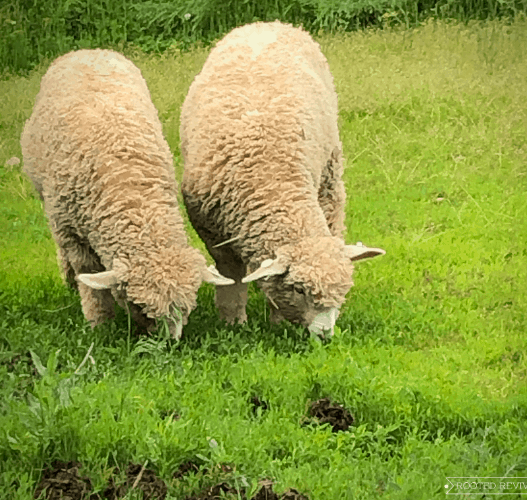
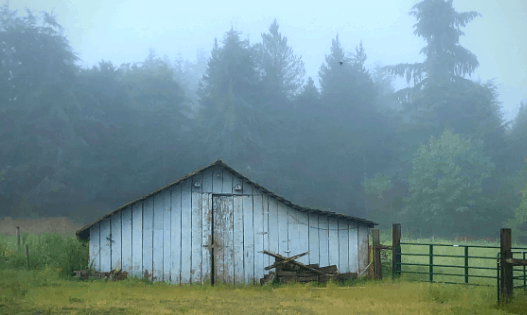
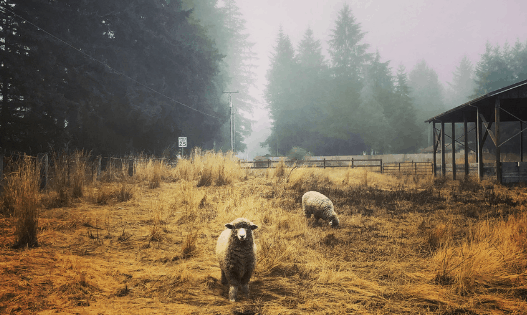
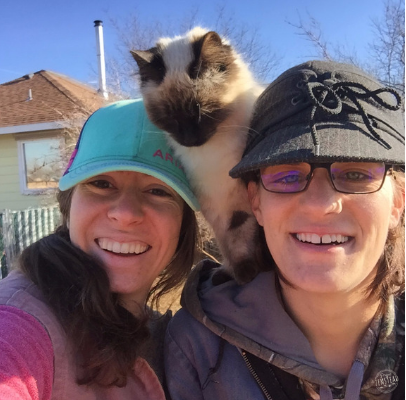
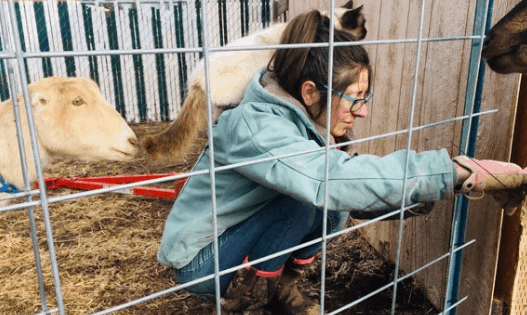
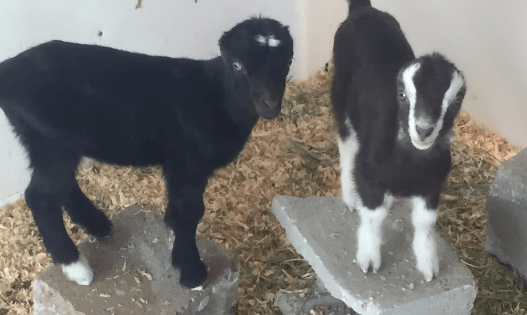
Wow! You have truly transformed the place. I particularly love how different the garden looks. I am sure it produces tons of delicious food! The house looks so spacious and clean now. Well done!
Oh my goodness — what a transformation! I absolutely love your garden area — that is truly amazing! You gals did such a great job transforming that house!
These are so inspiring! Thank you for the reminder that small and simple can make a huge difference for the better. We ended up removing the carpets in our place and stenciling the floor instead. They won’t last forever but by the time they need changing we will have saved up for a nicer wood floor!
Wow!!! I love seeing all of your posts, and this is so cool to see everything you guys have done! It looks amazing, and that you did almost everything yourself and for cheap!!
I think I’d like to do something like this… but then idk if I’m that dedicated.
I just love before and afters! You guys did an amazing job both inside and out. I am so impressed! I can’t wait to see what you do with your next place 🙂
Wow, you ladies have been BUSY! Great additions and improvements! The Kitchen looks really great!
I have a chicken coop question! I couldn’t locate your post on the Deep Litter Method. I’ve been attempting to do this in my chicken coop but really haven’t researched more than just one article on the subject in a chicken magazine. I’m a 67 yr old retired teacher who grew up in a small town in WV, married college sweetheart at Marshall Univ. (We Are Marshall Movie, 2006, is the true story of how my husband was recruited from a country school in Alabama to play football at Marshall after their entire team, coaches, boosters, flight crew, 75 total were killed in the worst sports air disaster ever on Nov.14,1970) Just a little FYI.lol
Anyhoo, this townie became an Alabama farm girl and have raised 3 children & 6 grandchildren on this farm. I’ve only raised chickens for three years. We moved the coop closer to the main house so it wouldn’t be easier for me to maintain, gather eggs, etc… I am trying to create a compost heap out of the chicken poop but the level of hay and poop has gotten too high over the winter. Or at least i think so. I’m not sure if I’m doing it right. Any tips???
Jane Hillis
Hazel Green, Ala
Huntsville,Ala.
Hi Jane! That’s incredible that your husband was one of the Marshall players to make up the new team after that terrible tragedy. What a legacy for him to leave! So, about the deep litter method: basically, the idea is that the lower layers of droppings and the bedding will “compost”or begin to break down in the coop. But, like any compost, it can be hard sometimes to get the ratio of green matter (the poo) and the brown matter (the shavings) correct so that the waste breaks down correctly.
The basic steps of the deep litter method are:
1. Clean the coop well before starting.
2. Lay down new shavings at least 3-4 inches deep. Fine litter breaks down better and is best for deep litter method
Turn the litter to increase oxygen. Make sure you have proper ventilation to let ammonia escape – the coop shouldn’t have a strong ammonia smell or seem damp.
3. Add new layers of litter weekly or as needed (this varies depending on how many chickens you have. More chickens = more droppings which means that new bedding will need to be added more often)
If you feel like the layers have built up too much, it might be time to scoop it all out, add it to your regular compost pile and start over. I wouldn’t let it build up too much more than 10-12 inches. If you are seeing that it isn’t breaking down well, perhaps try turning it/stirring it up a couple times a week and every time before you add a new layer. Increasing oxygen will speed up the process which is why ventilation in the coop is very important when you use this method. You may also want to experiment with the amount of bedding until you find the correct “bedding to droppings” ratio.
I hope these tips help! This is why homesteading is so much fun – it’s never boring and there’s always something new to figure out! 🙂
Beautiful. Functional. It shows that this has been a labor of love.
Thank you, Julia! We certainly cherished our time there. It will always hold very special place in our hearts!